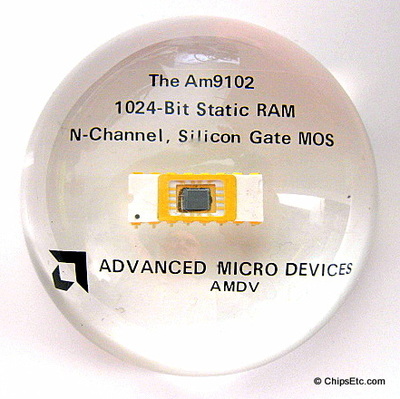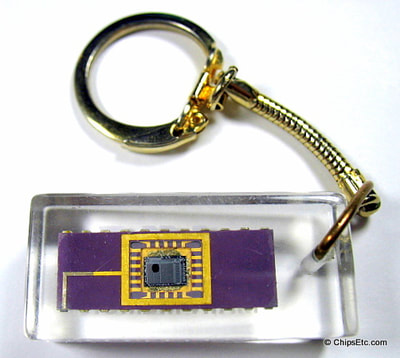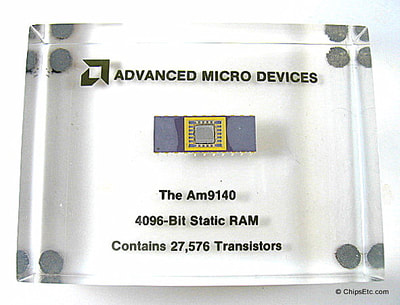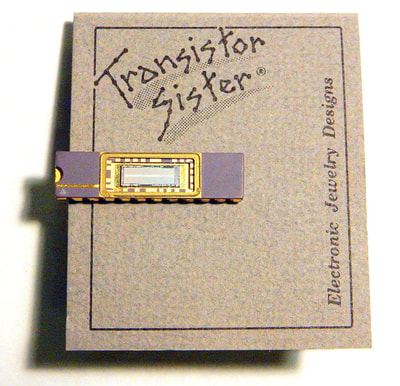SRAM Memory
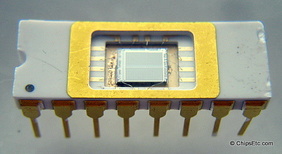
AMD's First SRAM Memory Chip, the AM9102 (1975)
The SRAM (Static Random Access Memory) chip is a "volatile" (it looses its stored data when the power is turned off) form of semiconductor computer memory. The difference between SRAM and DRAM is that where DRAM must be refreshed constantly, SRAM stores data without an automatic refresh making it a lot faster than DRAM.
SRAM memory is composed of an array of cells which each are composed of a group of transistors. Each memory cell has the capacity to store 1-bit of data. Today's SRAM cells are composed of six CMOS transistors making them less dense and more expensive than the two transistor DRAM memory.
The first semiconductor SRAM (using bipolar junction transistors) was invented in 1963 by Robert Norman at Fairchild Semiconductor. The first MOS SRAM (using p-channel MOSFET transistors) was invented a year later by an electrical engineer named John Schmidt, also of Fairchild Semiconductor.
IntelIntel released the first commercially available MOS memory chip, the 256-bit Intel 1101 SRAM chip in 1969 . It used Schottky TTL (Transistor–Transistor Logic). Intel would go on to release the first commercially available DRAM memory chip, the Intel 1103, the next year in 1970.
Early SRAM chips were manufactured in ceramic DIP packaging (as seen in this image of AMD's first SRAM chip in white ceramic packaging with gold cap and pins).
Today, SRAM memory is integrated directly into a Microprocessor chip as on-die RAM or cache memory which helps to speed up the processing of data thru the processors CPU.
SRAM memory is composed of an array of cells which each are composed of a group of transistors. Each memory cell has the capacity to store 1-bit of data. Today's SRAM cells are composed of six CMOS transistors making them less dense and more expensive than the two transistor DRAM memory.
The first semiconductor SRAM (using bipolar junction transistors) was invented in 1963 by Robert Norman at Fairchild Semiconductor. The first MOS SRAM (using p-channel MOSFET transistors) was invented a year later by an electrical engineer named John Schmidt, also of Fairchild Semiconductor.
IntelIntel released the first commercially available MOS memory chip, the 256-bit Intel 1101 SRAM chip in 1969 . It used Schottky TTL (Transistor–Transistor Logic). Intel would go on to release the first commercially available DRAM memory chip, the Intel 1103, the next year in 1970.
Early SRAM chips were manufactured in ceramic DIP packaging (as seen in this image of AMD's first SRAM chip in white ceramic packaging with gold cap and pins).
Today, SRAM memory is integrated directly into a Microprocessor chip as on-die RAM or cache memory which helps to speed up the processing of data thru the processors CPU.
